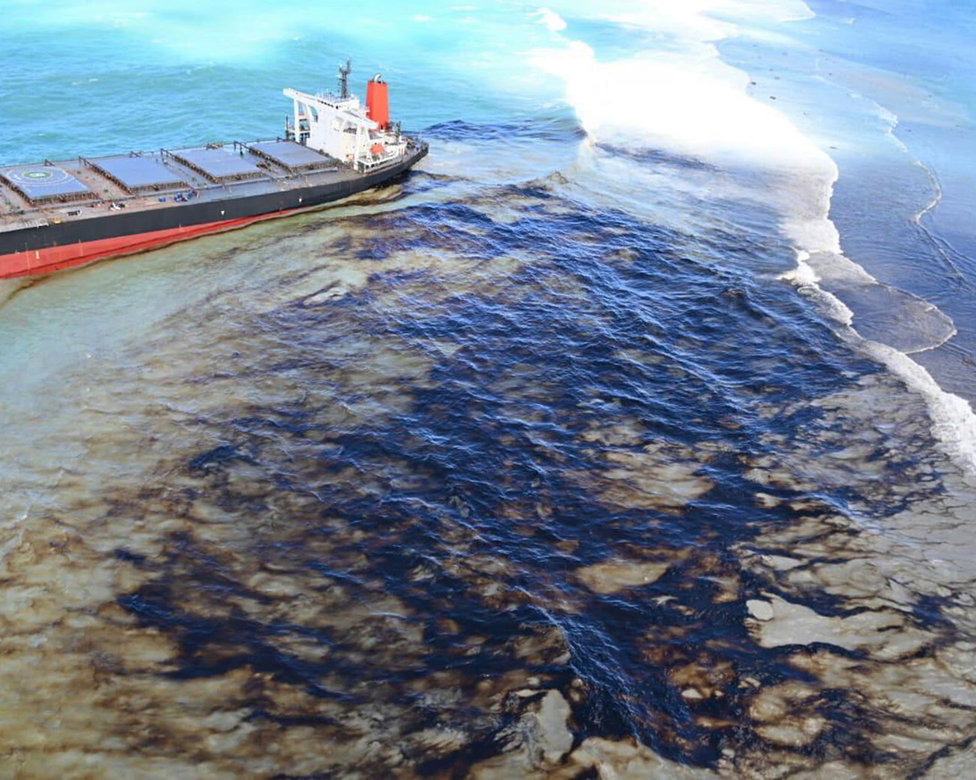
Pollution incidents reported between 2014 and 2019 were compared against scientific study that used satellite imagery to count slicks
Just 474 out of more than 90,000 oil slicks from ships around the world were reported to authorities over a five-year period, it can be revealed, and barely any resulted in any punishment or sanctions.
The figure, obtained from Lloyd’s List by the Guardian and Watershed Investigations, shows the pollution incidents reported between 2014 and 2019, compared against a scientific study using satellite imagery that counted the number of slicks from ships over the same period.
Furthermore, all oil slicks from ships visible by satellites are illegal because they exceed pollution limits by at least three orders of magnitude, new research by Florida State University has found. Many of the slicks are the result of ships deliberately discharging bilge water containing oil in order to keep the vessels stable.
“The level of under-reporting of pollution is a huge unknown,” Dr Elizabeth Atwood from Plymouth Marine Laboratory said. “The argument that has historically been made is that there is an equal amount coming from natural seeps. But recent research keeps underlining that this is not true for much of the globe,” said Atwood.
Hugo Tagholm, the executive director of Oceana UK, said: “It is appalling to hear of the extreme levels of toxic pollution caused by these oil spills from shipping, as well as the frankly mind-bending under-reporting of the situation.”
Extensive analysis by scientists of hundreds of thousands of satellite images of slicks in the world’s seas between 2014 and 2019, found that 20% – or 90,411 – originated from ships and added up to about the size of Italy, with 21 high-density slick belts coinciding with shipping routes. In comparison, 2% were from oil platforms and pipelines, and just over 6% from natural oil seeps on the ocean floor. The rest were either from land sources or unidentified ships.
“Our data show that these spills represent persistent and widespread violations,” said Ian MacDonald, a retired professor of oceanography from Florida State University and coauthor of the paper.
The researchers say this is the first time that real world data has proven that properly treated discharges do not leave a visible trace.
“It suggests that bilge dumping has been a pervasive issue in the global oceans for decades,” said Carrie O’Reilly, the lead author at Florida State University.
Yet only a fraction of these pollution incidents have faced any sanction under the international convention for the prevention of pollution from ships (Marpol).
“It’s hard to think of a case where a transient oil slick would have invited regulatory action,” said McDonald, who believes the time and expense of bringing a case against a well-financed shipping company is prohibitive.
In European waters for example, despite EU pollution laws that sometimes surpass Marpol in stringency and satellite-based systems being utilised, enforcement remains uneven with limited penalties and few prosecutions, the European court of auditors warned in March.
“In our recent audit of EU actions tackling sea pollution by ships, we concluded that polluting ships can still slip through the net,” said Nikolaos Milionis, the ECA member responsible for the audit.
“In particular, we found that EU countries check fewer than half of the possible spills detected by the EU satellite-based system. In the end, they confirmed pollution in only 7% of the cases. This shows both limitations in the technology and in the means used by member states to check the alerts,” Milionis said.








